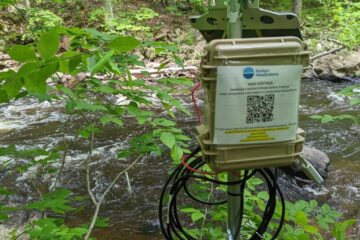Groundwater Quality Trend Analysis
Well testing does more than let individual homeowners know if their water is safe to drink. It also contributes to a growing body of information about groundwater quality throughout our watershed. In 2015 and 2016, Raritan Headwaters analyzed 30 years’ worth of data – over 14,000 records – to detect changes in groundwater quality that take place slowly over time.
One important finding was a trend of increasing levels of arsenic – a known carcinogen that occurs naturally in certain layers of bedrock – in wells in some regions of the watershed from 2003 to 2015. Raritan Headwaters is exploring the potential causes of this trend which points to land use change such as increasing suburban development and climate change.
Another important trend showed that concentrations of nitrate increased between 1984 and 2015. This trend is likely associated with and in agricultural and suburban applications of fertilizers and also an increase in septic system density with development.
In addition, the study highlighted the prevalent failure of many wells for coliform bacteria and also the issue of lead in drinking water in older homes both those on well and on public water.
The study underscores the fact that water quality in our underground aquifers is vulnerable and changes over time. Private well owners must continue to test their wells annually. Those on public water must remain vigilant for lead contamination from pipes. Contaminants in drinking water are treatable. To find out what if any contaminants are in your well water, visit our Well Test Program.



